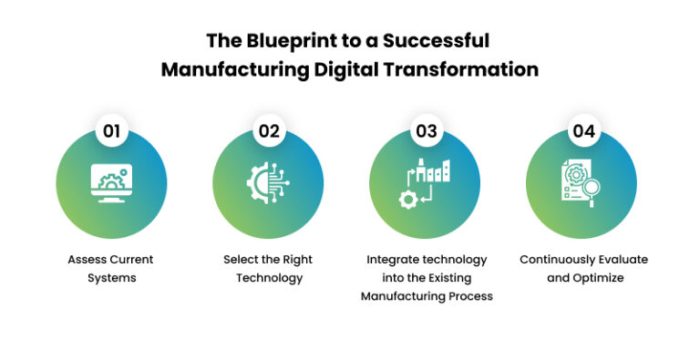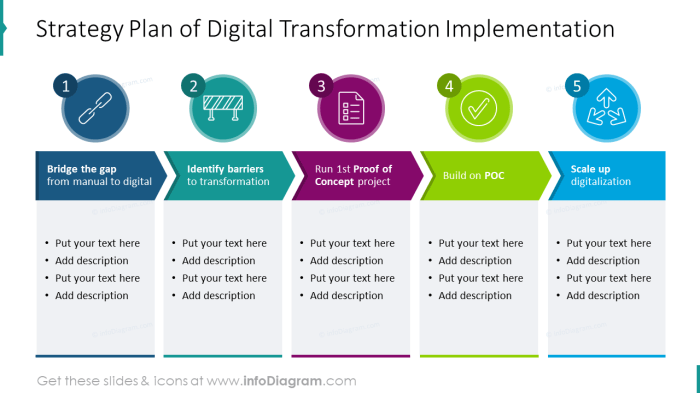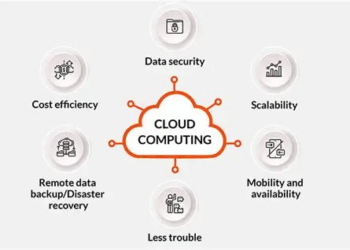
Digilife digital transformation planning and execution sets the stage for this enthralling narrative, offering readers a glimpse into a story that is rich in detail and brimming with originality. In a world driven by digital advancements, understanding the essence of ‘digilife’ is crucial for navigating the complexities of the digital age.
This guide delves into the significance of digital transformation, showcasing successful initiatives that have reshaped businesses and industries.
As we embark on this exploration, we will uncover the core components of strategic planning, execution strategies, and the pivotal role of technology in driving digital transformation. Join us on this insightful journey through the realm of Digilife Digital Transformation Planning and Execution.
Introduction to Digilife Digital Transformation Planning and Execution

Digilife refers to the integration of digital technologies into everyday life, encompassing how individuals, businesses, and society interact in the digital age. In today’s fast-paced and technology-driven world, digilife plays a crucial role in shaping the way we live, work, and communicate.
Digital transformation is the process of leveraging digital technologies to fundamentally change business operations, processes, and customer experiences. It involves adopting new technologies, reimagining business models, and embracing a digital-first mindset to stay competitive in the modern marketplace.
Significance of Digital Transformation
- Enhanced Customer Experience: Companies like Amazon and Netflix have revolutionized customer interactions through personalized recommendations and seamless online experiences.
- Operational Efficiency: Automation and digital tools have streamlined processes for organizations like Tesla, leading to increased productivity and cost savings.
- Agility and Innovation: Companies such as Airbnb and Uber have disrupted traditional industries by embracing digital transformation and continuously innovating their business models.
Importance of Strategic Planning

Strategic planning plays a crucial role in the success of digital transformation initiatives. It involves outlining clear objectives, identifying key strategies, and aligning resources to achieve desired outcomes.
Benefits of a Well-Defined Digital Transformation Strategy
- Enhanced Focus: A well-defined strategy helps organizations focus on specific goals and outcomes, avoiding distractions and ensuring alignment with overall business objectives.
- Optimized Resource Allocation: By mapping out a clear plan, organizations can allocate resources effectively, reducing wastage and maximizing efficiency.
- Risk Mitigation: Having a structured strategy allows organizations to anticipate potential risks and challenges, enabling proactive mitigation measures to be put in place.
- Increased Agility: With a solid strategic plan, organizations can adapt to changing market conditions and emerging technologies more quickly, staying ahead of the competition.
Key Components of a Digital Transformation Plan
- Business Objectives: Clearly define the goals and objectives of the digital transformation initiative, ensuring they are aligned with overall business strategies.
- Technology Roadmap: Develop a detailed roadmap outlining the technologies to be implemented, timelines for execution, and expected outcomes.
- Change Management Strategy: Implement a robust change management plan to ensure seamless adoption of new technologies and processes across the organization.
- Data Management Framework: Establish a framework for managing and leveraging data effectively to drive decision-making and innovation.
- Cross-Functional Collaboration: Foster collaboration and communication among different departments to ensure alignment and synergy in digital transformation efforts.
Execution Strategies for Digital Transformation
Implementing a digital transformation plan requires careful consideration and a well-thought-out strategy to ensure success. Let’s explore some key approaches to executing a digital transformation plan:
Agile Implementation Approach
- Break down the transformation process into smaller, manageable phases.
- Regularly review progress and adjust strategies based on feedback and results.
- Encourage collaboration and communication among team members to foster innovation and problem-solving.
Change Management Strategies
- Develop a comprehensive change management plan to address resistance and ensure smooth adoption of new technologies.
- Provide training and support to employees to help them navigate the changes effectively.
- Communicate the benefits of the digital transformation to stakeholders and employees to gain buy-in and support.
Data-Driven Decision Making
- Leverage data analytics tools to track key performance indicators (KPIs) and measure the impact of digital initiatives.
- Make informed decisions based on data insights to optimize processes and drive continuous improvement.
- Implement data governance practices to ensure data accuracy, security, and compliance.
Best Practices for Successful Implementation
- Set clear goals and objectives for the digital transformation to align efforts and measure success.
- Engage key stakeholders from the beginning to secure support and involvement throughout the process.
- Monitor progress regularly and make adjustments as needed to stay on track and achieve desired outcomes.
Leveraging Technology in Digital Transformation

Technology plays a crucial role in driving digital transformation across industries. From streamlining processes to enhancing customer experiences, the integration of technology is vital for organizations looking to stay competitive in the digital age.Emerging technologies such as Artificial Intelligence (AI), Internet of Things (IoT), and blockchain are revolutionizing the way businesses operate and interact with their customers.
These technologies enable companies to collect and analyze data in real-time, automate repetitive tasks, and create new business models.
Impact of AI, IoT, and Blockchain in Digital Transformation
- AI: Companies like Amazon and Netflix use AI algorithms to personalize recommendations for their customers, increasing engagement and sales.
- IoT: Retailers like Walmart use IoT devices to track inventory levels, optimize supply chain management, and improve operational efficiency.
- Blockchain: Walmart and IBM have implemented blockchain technology to enhance transparency in food supply chains, ensuring the authenticity and quality of products.
Conclusion
In conclusion, Digilife Digital Transformation Planning and Execution is a roadmap towards innovation and growth in the digital landscape. By embracing strategic planning, overcoming execution challenges, and leveraging cutting-edge technologies, businesses can thrive in an era defined by digital evolution.
Let this guide inspire you to embark on your own digital transformation journey, shaping a future where possibilities are limitless.
FAQ Overview
What is the significance of ‘digilife’ in the digital age?
Digilife represents the integration of digital technologies into various aspects of our lives, shaping how we interact, work, and consume information in the modern era.
How does strategic planning contribute to digital transformation?
Strategic planning provides a roadmap for organizations to align their digital initiatives with business goals, ensuring a coherent and effective transformation process.
What are some key challenges organizations may face during the execution of digital transformation?
Challenges may include resistance to change, lack of digital skills, integration complexities, and cultural barriers within the organization.














